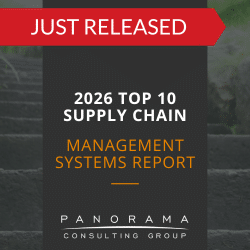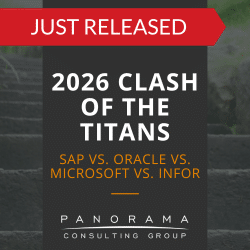A world energy leader and global powerhouse, GE has made a name for itself with just two letters. Yet even the biggest companies realize they have room for improvement, and GE was no exception.
For years, GE talked about a digital transformation that would propel it to new heights and essentially allow it to own the industrial internet. Then, in 2015, the company created GE Digital with the goal to become one of the top ten software companies by 2020.
One year past that benchmark, the project has yet to meet its original vision. Today, we’re diving into the GE digital transformation failure to more clearly understand what went wrong and the lessons learned.
Contemplating litigation?
We have multiple software expert witnesses available for provision of reports, depositions, and testimonies.
The Digital Transformation Failure at GE: What Went Wrong?
Stirrings of a digital transformation at GE started back in 2013. At that time, the buzzword was “Predix” — the name GE had given its new software platform.
By 2014, the industry giant had launched a collection of exclusive programs on Predix, marketed as “GE Predictivity Solutions.” The goal of these programs was to help users improve their operations and asset performance management.
At first, it was off to a promising start. That same year, GE announced that the solutions were generating the company more than $1 billion in revenue across GE’s various business units, including aerospace, power, transportation, financing, and more.
To the outside world, it looked like everything was going according to plan. Internally, however, things were crumbling. Resources were spread too thin, project objectives were ill-matched to expertise, and timelines were rushed.
While there was incremental progress made with the transformation, it never produced the kind of innovation (and money) that GE had hoped. As a result, the company eventually sold its digital asset business in a move that eventually culminated in the GE Predix platform failure.
4 Lessons Learned from This Digital Transformation Failure
What can your company learn from the GE digital transformation failure? Let’s take a closer look at the factors that contributed to its downfall and how you can avoid them in your own project.
1. Create a Clear Project Vision
Any digital transformation project should have a clear and consistent focus from the beginning. This involves identifying quantifiable business improvements and looking for ways to achieve them.
You should also identify how the project will help your company:
- Reduce costs
- Generate revenue
- Develop new business models
Especially for a company as gigantic as GE, a digital transformation can quickly become overwhelming. To keep it manageable, create specific goals for your project and develop a rollout plan so you know where to focus your efforts, and in what order.
It’s evident that this project lacked a clear vision from the beginning. GE set out to transform virtually all its business units at once.
It would have been more viable to start with one industry or one business unit to gain initial traction. Then, GE could have used this momentum to transform other divisions in the same manner.
2. Choose Project Partners Wisely
For a digital product to be successful, it needs to deliver upmarket movement for its partners.
In the case of GE, the chosen partners couldn’t leverage Predix to advance as GE imagined. While they could train their users and build the apps, they were ultimately limited by their business models.
The right partners can drive your project forward or hold it back. When choosing which ones to bring on board, consider their current setups and how the final product will fit within it. If there aren’t any incentives for your partners to leverage it, their project involvement could backfire.
3. Consider Your Competition
It was certainly ambitious for GE to create its own cloud data center. In theory, it should have worked.
However, there was one aspect that was under-considered: the immense amount of competition by names that had already risen to the top of this space.
Before it even began, the data center was competing against giants like Google, Amazon, and Microsoft. Pulling users away from those already-established platforms proved to be nearly impossible.
Competitor analysis should be a key part of any project plan, allowing your team to fully understand just what they’re up against and brainstorm how to differentiate.
4. Avoid a Project-Centric Mindset
Any time you develop a digital product, there are two aspects to consider: the product itself and the users who will deploy it. As such, it’s important to consider the service side of the implementation.
Transforming your services requires a transformation in many areas, including human capital, company culture, sales structures, and more. However, reports from the GE failure indicate that the company remained primarily focused on its IoT product, without giving as much thought to how it would optimize the user experience.
In any transformation effort, there must be a balance between the technical side of the project and the people side. This includes working with a change management consultant to develop an organizational change management plan that will ensure your workforce is ready and willing to embrace the new workflows.
Power Your Digital Transformation
The GE digital transformation failure was avoidable. Instead of noticing the red flags, the company pushed ahead too quickly and without a clear vision.
Before you begin your own digital transformation, we recommend taking the time to establish a project vision and focus on the customer experience. Our ERP consulting team can help you create a model and a roadmap for this journey. Contact us below for a free consultation.














